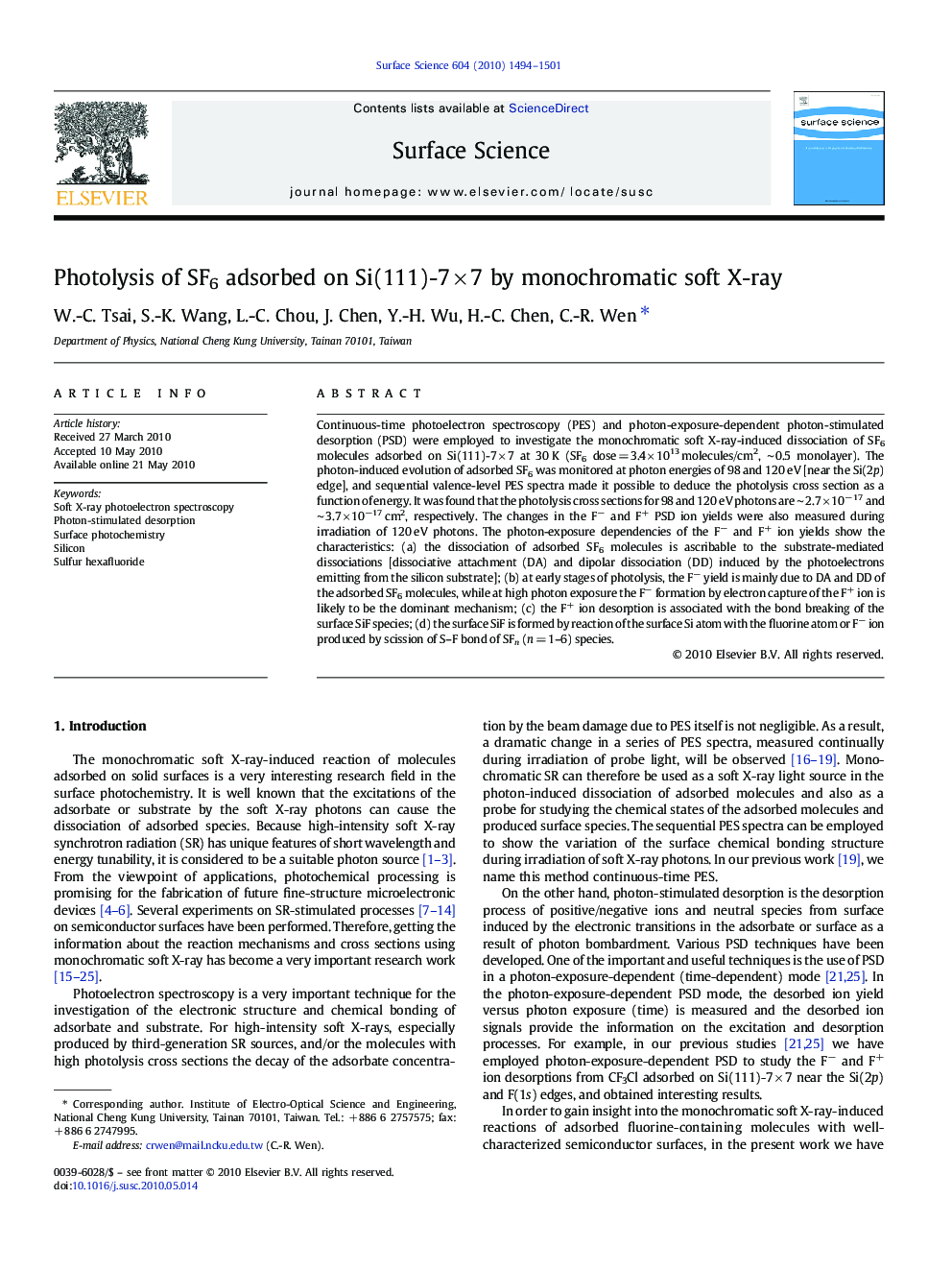| Article ID | Journal | Published Year | Pages | File Type |
|---|---|---|---|---|
| 5423079 | Surface Science | 2010 | 8 Pages |
Abstract
Continuous-time photoelectron spectroscopy (PES) and photon-exposure-dependent photon-stimulated desorption (PSD) were employed to investigate the monochromatic soft X-ray-induced dissociation of SF6 molecules adsorbed on Si(111)-7 Ã 7 at 30 K (SF6 dose = 3.4 Ã 1013 molecules/cm2, â¼Â 0.5 monolayer). The photon-induced evolution of adsorbed SF6 was monitored at photon energies of 98 and 120 eV [near the Si(2p) edge], and sequential valence-level PES spectra made it possible to deduce the photolysis cross section as a function of energy. It was found that the photolysis cross sections for 98 and 120 eV photons are â¼Â 2.7 Ã 10â 17 and â¼Â 3.7 Ã 10â17 cm2, respectively. The changes in the Fâ and F+ PSD ion yields were also measured during irradiation of 120 eV photons. The photon-exposure dependencies of the Fâ and F+ ion yields show the characteristics: (a) the dissociation of adsorbed SF6 molecules is ascribable to the substrate-mediated dissociations [dissociative attachment (DA) and dipolar dissociation (DD) induced by the photoelectrons emitting from the silicon substrate]; (b) at early stages of photolysis, the Fâ yield is mainly due to DA and DD of the adsorbed SF6 molecules, while at high photon exposure the Fâ formation by electron capture of the F+ ion is likely to be the dominant mechanism; (c) the F+ ion desorption is associated with the bond breaking of the surface SiF species; (d) the surface SiF is formed by reaction of the surface Si atom with the fluorine atom or Fâ ion produced by scission of S-F bond of SFn (n = 1-6) species.
Keywords
Related Topics
Physical Sciences and Engineering
Chemistry
Physical and Theoretical Chemistry
Authors
W.-C. Tsai, S.-K. Wang, L.-C. Chou, J. Chen, Y.-H. Wu, H.-C. Chen, C.-R. Wen,
